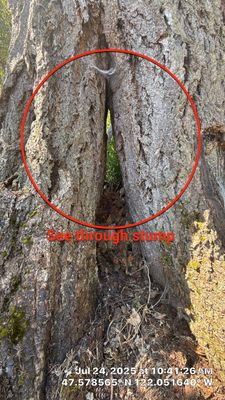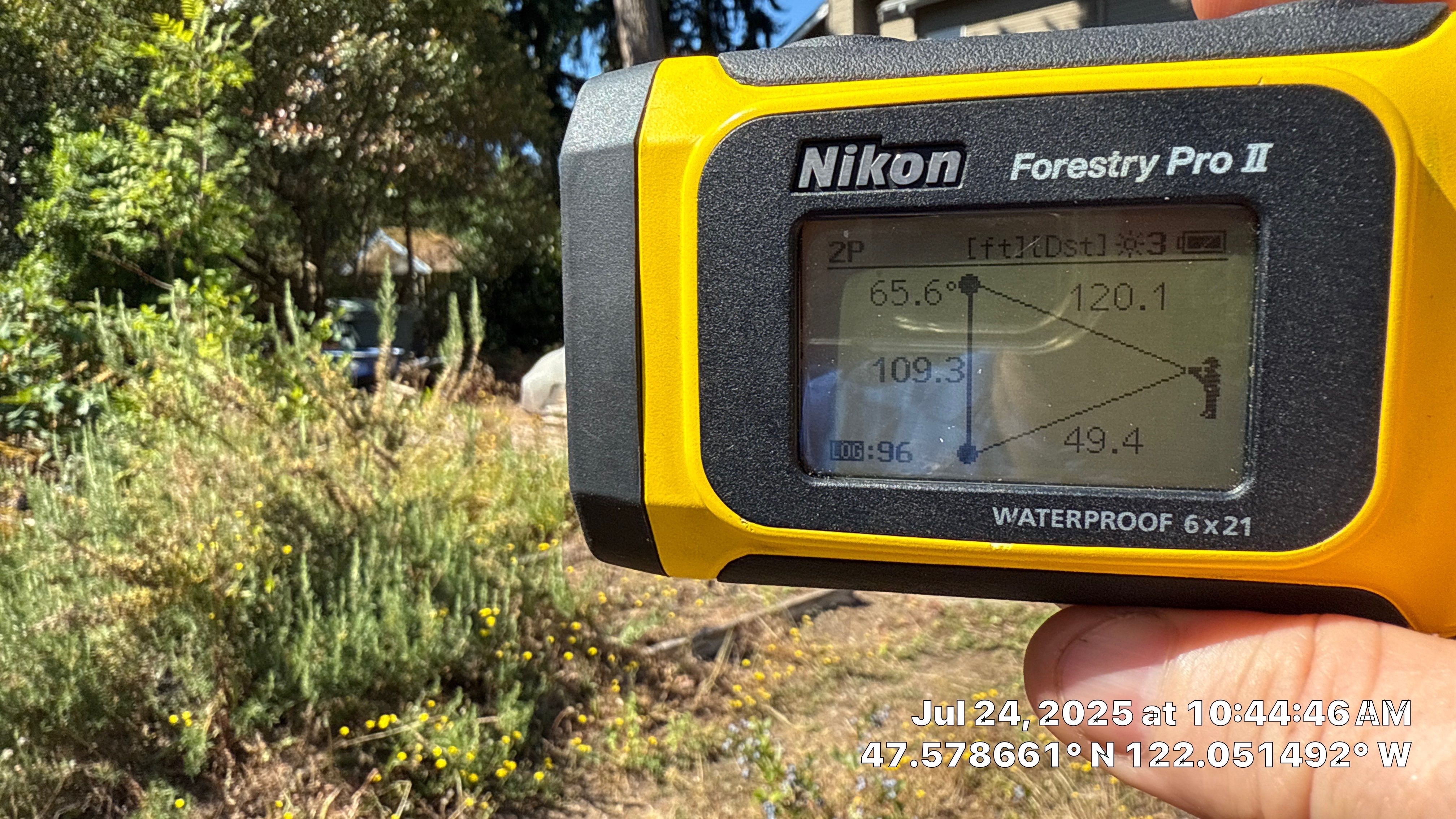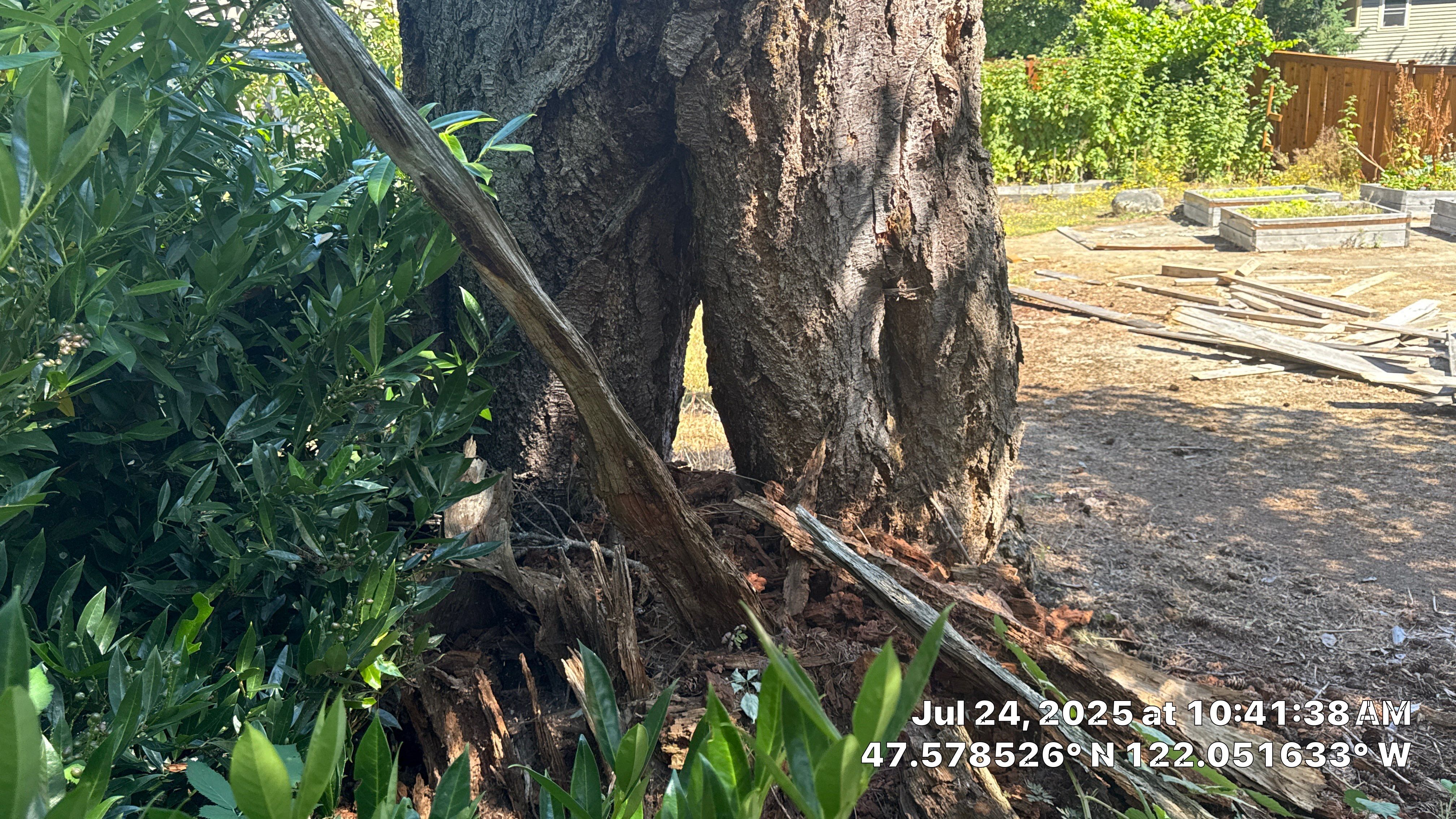

🌲 Trusty Showcase: Nurse-Stump Grown Douglas Fir with Elevated Root Flare – Sammamish, WA
🎯 Why This Is a Problem No soil contact at the base: The tree’s natural ability to form stabilizing lateral roots is compromised. Load-bearing roots are elevated and exposed, leaving them vulnerable to mechanical failure or wind stress. Trunk formation is delayed upward, concentrating mass and leverage high above the ground. Failure profile: This type of root-and-trunk architecture often leads to sudden uprooting, especially in windstorms or saturated soils — common to Sammamish and the Puget Sound region. 🔍 Our Evaluation Using TRAQ methodology and on-site measurements, our team identified: Unconventional load distribution Limited anchorage capacity High exposure to wind and slope pressure This tree poses a high risk to structures, residents, and utilities located within its potential fall zone. ✅ Recommended Action While it’s an impressive and ecologically interesting specimen, this Douglas Fir cannot be preserved safely in a residential setting. Tree removal is recommended, along with a replanting plan that supports forest restoration using species with more conventional architecture and soil anchorage. 🌱 Did You Know? Nurse stumps are common in old-growth forests and help new trees thrive — but in urban or suburban areas, these same features can create future hazards as the stump decomposes away. Want help identifying unusual root flare or basal defects on your trees? 📞 Call us at 206-486-7790 or visit www.soundtreecarellc.com




